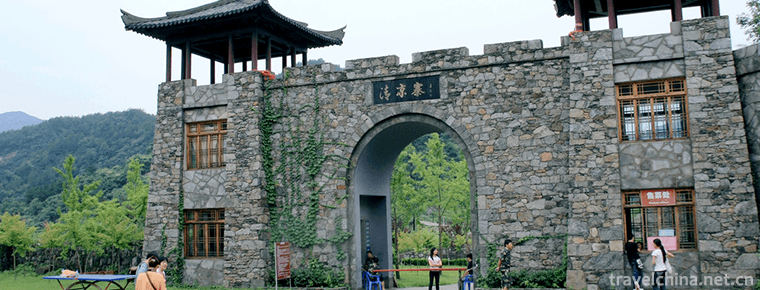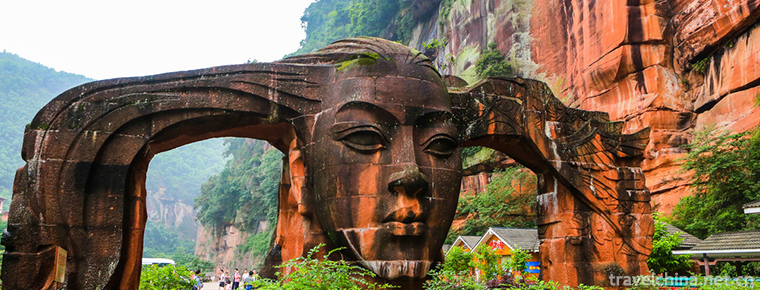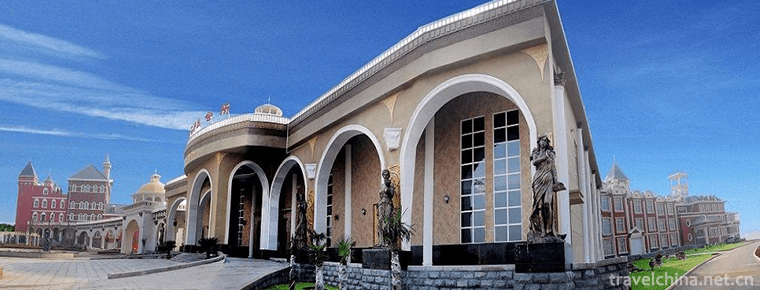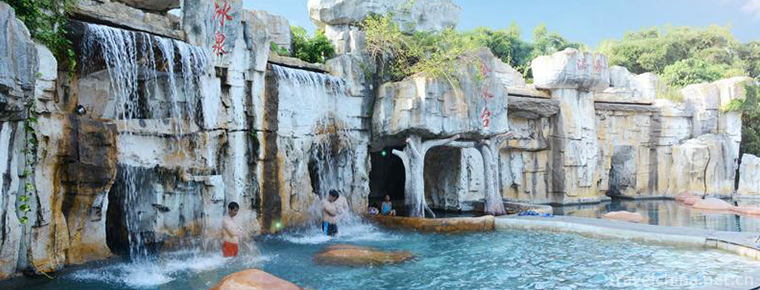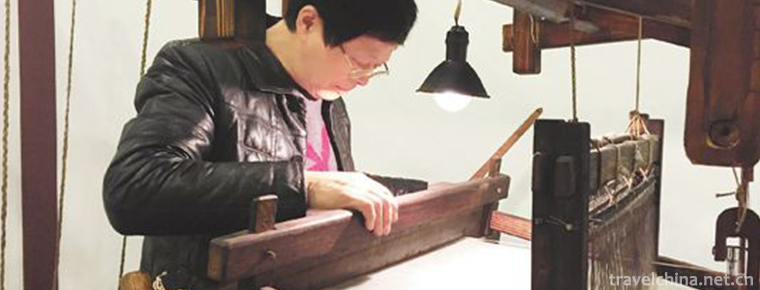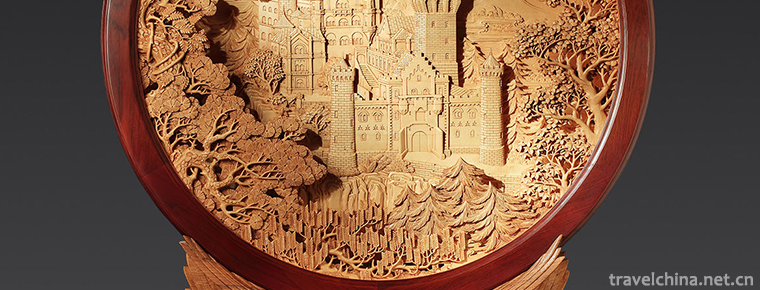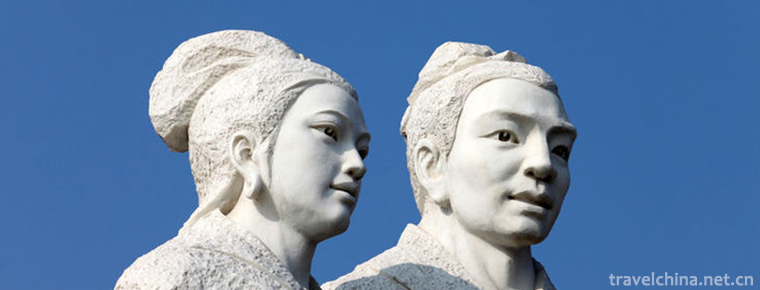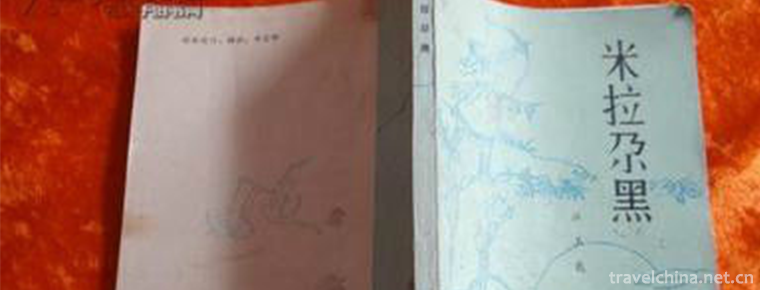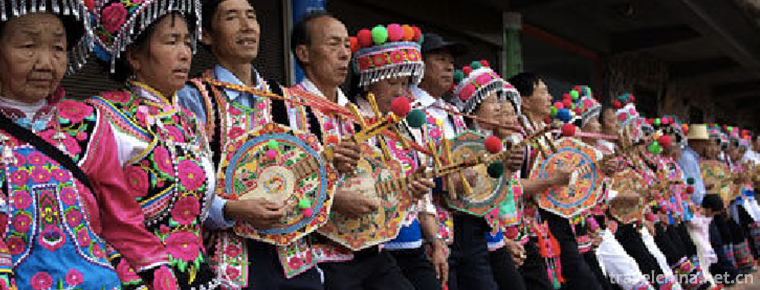Sama Dance
Sama Dance
Sama dance is a kind of folk dance that the Uygur working people dance together during the New Year's Festival. Its movements are simple and powerful. It is mainly popular in Kashgar and Shache of Southern Xinjiang.
May 23, 2011 was listed in the third batch of national intangible cultural heritage list by the State Council.
Historical Evolution
Samaben is the name of a primitive religion, which was once believed by the ancient Uygur people. At that time, due to the extremely backward productivity, people prayed for the harvest of hunting and agriculture to various gods of nature in the form of songs, drums and dances under the organization of full-time priest, Sama.
With the development of productivity and the change of economic life, it has gradually evolved from sacrificial rituals to collective entertainment activities during the working people's New Year's Day, and then to a unique form of folk dance. In addition to the New Year's Day, Sama dances are sometimes performed on general occasions of celebration. Sama dances and music are also absorbed in the beginning of the third part of the twelve Muqam, Messilev.
After the introduction of Islam into Xinjiang, the rulers also used Sama as a folk dance form for religious activities. For example, the action of raising both hands is interpreted as "Huda (God) in heaven" and the action of holding one hand to the chest is interpreted as "Huda is in the heart".... Although Sama dances are played by suona and drums, no laughter is allowed. The mood of the dancers and the atmosphere of the dance are solemn and solemn. The Sama held in the Temple House had no music. With the prayer of Amu, she was dancing and shouting rhythmically "Ooh - Ooh!" But in the folk entertainment occasions, when people dance Sama, they are still full of happy atmosphere. After liberation, they jumped more vigorously. ?
Dance features
In the early morning of Kurban Festival, the crisp sound of iron drums drifted to thousands of families along with the warm morning breeze. People dressed in costumes poured from all directions to the Plaza of the Great Church Temple to celebrate traditional festivals. Everyone danced the Samar dance with the clear and powerful Samar tune and the rhythm of the iron drum. Dancers follow the counter-clockwise direction, with the drum point "thump" strong tone to start, and gradually the rhythm turns fast, the drum sound becomes more powerful, the movement also turns to fierce and enthusiastic, many people began to do Sama dance unique continuity of jumping and other technical movements. The audience and the dancers echoed each other, and the mood became higher and higher. Finally, the dance ended in a jubilant chorus.
Most of the participants were men and sometimes women, but all of them danced together by themselves. Samar dancing is steady and solid, full of the breath of labor and life.
The movements of Sama dance and the rhythm of drums are closely coordinated. "Bah" time is mostly full foot landing, stable and powerful, not rigid and not immediately raised, with the effect of a note. When the power leg is lifted, the knee of the main leg has obvious flexion and extension, and the body undulates greatly. ?
Most of the hands are semi-clenched fists in natural form, which have obvious leisureliness when they are thrown open and bent back. With the swing of the hand, the body has the feeling of slightly shaking left and right. One-step skipping, one-step skipping, one-step skipping and so on are common skills in Sama. ?
Samar has a special tune. It usually starts with the familiar music of Mukam or Thanem, and then turns to Samar as the rhythm of the drum changes.
The music rhythm of Sama Dance is vigorous and powerful, and it has its own characteristics. Basically, it can be divided into the following rhythms:
The main instruments accompanying Sama are Suona and drum. The number of suonas varies. The drum is composed of two drums with different pitches, which produce the sound of "thump" and "dang", forming a sharp contrast. In large occasions, sometimes there are two or three groups, plus a bigger drum with more rich timbre, highlighting the sound effect of "drum". The rhythm of drum determines the harmony and unity of dance speed and movement. Experienced drummers make the drumbeating varied and inspire the mood of the dancers and the audience. Suona plays a more flexible tune, not limited by the drum, sometimes dragging two or three bars of long notes, or three or four bars of intervals to highlight the rhythm of the drum.
Current status of protection
Kashgar "Samar Dance" was listed in the third batch of national intangible cultural heritage list by the State Council on May 23, 2011. It is the only national intangible cultural heritage protection project in Kashgar. It is listed as the five major citizens along with the Uygur traditional "Saim Dance", "Daolang Dance", "Shadiana Dance" and "Nazurkumu" dance. One of the dances between Uygurs is the most representative group dance for celebration.
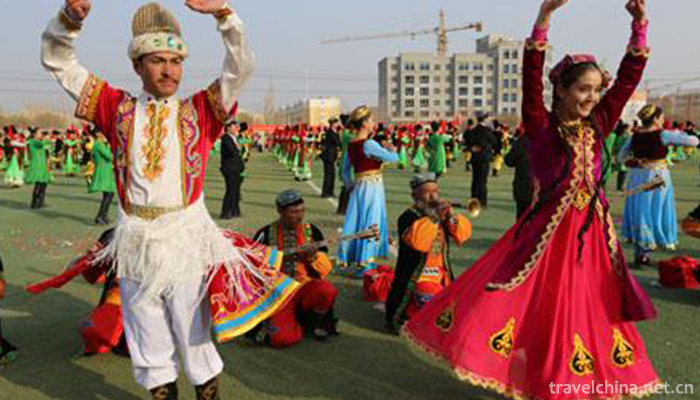
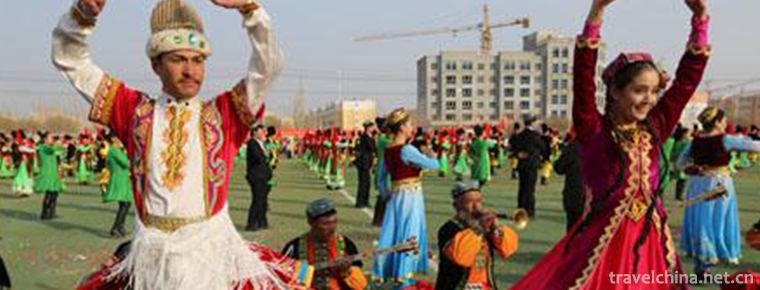
Sama Dance
-
Huangpi Mulan Cultural Ecotourism Area
Wuhan Huangpi Mulan Cultural Eco-tourism Area is located in Huangpi District, Wuhan City, Hubei Province, including Mulan Mountain, Mulan Tianchi, Mulan Grassland
Views: 235 Time 2018-12-12 -
Danxia Chishui
Danxia National Geopark in Chishui City, Guizhou Province, is located in the southern edge of Sichuan Basin, close to the northern foot of Daloushan Mountain in northern Guizhou Province and the weste
Views: 230 Time 2019-01-05 -
Hanover Manor
Hannuo Manor is a national AAAA-level tourist attraction, located in the southeast suburbs of Shanting District, Zaozhuang City, Shandong Province. It is located on the front alluvial slope surrounded
Views: 125 Time 2019-01-13 -
Zhou Qiao old street
Zhouqiao Old Street is a national AAAA tourist attraction. The old street of Ximen in Jiading is located on the west side of Bole Square in downtown Jiading
Views: 191 Time 2019-01-21 -
Jinshuitai Hot Spring Scenic Area
Jinshuitai Hot Spring is a hot spring resort built according to the national AAAA scenic standard. It is located in Shuitai Town, Xinxing County, Guangdong Province
Views: 401 Time 2019-01-27 -
Silk Weaving Techniques
Silk weaving is a traditional Chinese handicraft with a long history. It consists of four parts: Yuhang Qingshui silk sponge production technology, Hangluo weaving technology
Views: 193 Time 2019-04-04 -
Dongyang wood carving
Dongyang woodcarving, one of the Chinese folk carving arts, is named for its origin in Dongyang, Zhejiang Province. Dongyang woodcarving, together with Qingtian stone carving and Huangyang woodcarving
Views: 282 Time 2019-04-27 -
Legend of Dong Yong
Dong Yong's legend is the fifth largest love legend and the fifth largest folk legend in ancient China. It was first recorded in Liu Xiang's Biography of Filial Piety (Picture) in the Western Han Dyna
Views: 133 Time 2019-04-27 -
Wind and Fire Meteor
Fenghuo Meteor is a traditional folk performing art which combines acrobatics and martial arts. It is one of the first intangible cultural heritages in Shanxi Province.
Views: 415 Time 2019-04-29 -
Mira Gahei Mile La Ga Hei
Mira Gahei, Dongxiang folk tale. Also known as "Moonlight Mirror". Among the Dongxiang people, there are also poem-style stories of "Mira'er Hei", which are intermingled in rhyme a
Views: 122 Time 2019-06-04 -
Left Foot Dance of Yi Nationality
The left foot dance of the Yi people, which is called "Gouzha" in the Yi language, falls to the left foot. Dao Guangnian's Dingyuan County Chronicle says, "It's called falling on the le
Views: 363 Time 2019-07-13 -
Dragon elbow mountain
Longcub mountain, also known as yuxu mountain, is located in Longquan Township, northwest of Huili County, Liangshan Yi Autonomous Prefecture, Sichuan Province, China. It is also known as yuxu mountain at the junction of Baiguowan
Views: 358 Time 2020-10-16
